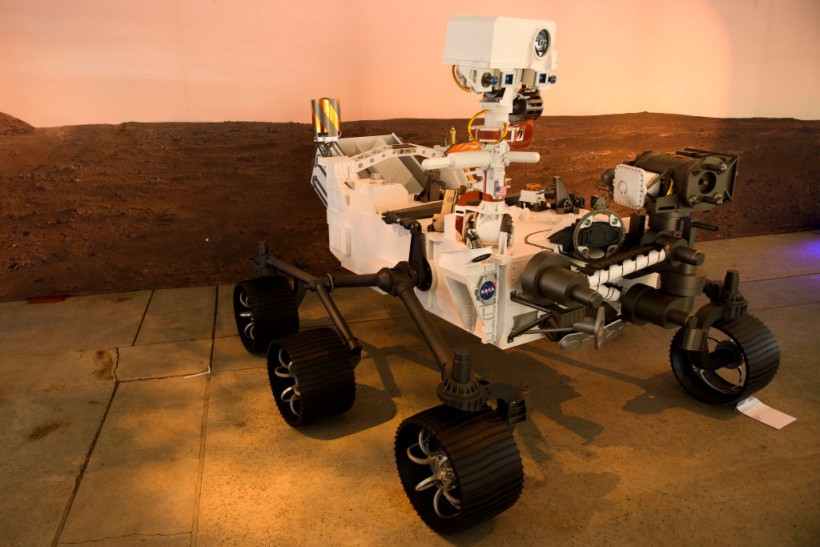A week from now, at a Mars community workshop, mission managers at NASA are set to announce a plan to deposit on the floor of Jezero crater, which was holding a lake billions of years back,10 or 11 of the titanium sample tubes.
After collecting several pinkie-size rock samples during its 18-month mission on Mars, the Perseverance rover sends a message for planetary scientists: Their "order is ready for pick-up," a Science report specified.
Mars rover nears milestone in ambitious plan to to return first rocks from another planet#sciencehttps://t.co/F6obXocdoa
— Pure Science 🔭🔬🧪🚀🧬🦖 (@Pur3Science) September 20, 2022
If NASA officials are endorsing the plan, Perseverance could start dropping the samples as soon as November, building a cache that will play a vital role in an ambitious plan to retrieve the first rocks from another planet.
Dubbed as the Mars Sample Return or MSR mission, this would employ a small rocket to ferry rocks to an orbiting spacecraft that would send them to a special facility on Earth by next year.
ALSO READ: Trial Device MOXIE Could Contribute to Rocket Launch Off Mars

A full-scale model of the Mars 2020 Perseverance rover is displayed at NASA's Jet Propulsion Laboratory (JPL) on February 16, 2021, in Pasadena, California. The Mars exploration rover will search for signs of ancient microbial life and collect rock samples for future return to Earth to study the red planet's geology and climate, paving the way for human exploration.
Mars Sample Return Mission
There, laboratory scientists could follow up on the compelling finding of the rover that many samples comprise organic molecules, the building blocks of life, and then learn if they were made living things.
The sample cache is, in fact, a backup plan of MSR, which is described on NASA's website. The origins plan or Plan A is for this NASA rover to stow a large set of 30 samples in its belly as it continues with its scientific treasure plan, and eventually have them delivered to the return rocket by around 2030.
Nonetheless, if the rover gets stuck or doesn't succeed along the way, researchers said they don't want to be left empty-handed.
Planetary mineralogist Susanne Schwenzer from the Open University said, "Call it an insurance policy." Schwenzer, also a member of the MSR Campaign science group, added that once the cache reaches the ground they know they always have the option to pick it up.
'Backup' Cache
For the rover team, being able to establish the backup cache is a milestone, showing how MSR, a dream of Mars researchers for a generation, is beginning to come together.
According to the rover mission's project scientist and geologist Ken Farley, from the California Institute of Technology, getting to this point is quite amusing as it shows that the mission is gradually becoming a reality.
The cache is an inventory of rocks from the 13-kilometer exploration of the rover, extending from the crater floor where it landed to the fossilized river delta's edge.
Some are coming from lava flows, an astonishing and welcome discovery for rover researchers who were expecting to discover on the crater floor, mostly lakebed sediments.
Signs of Ancient Life on Mars
Such igneous rocks have radioactive elements like uranium. Their decay provides a clock that Earth-based laboratories can employ to date the moment when the rocks got crystallized.
Some of the volcanic rocks are believed to have been laid down before the delta, and some may have occurred after so they could provide time bounds on the watery bout that created it.
Lastly, volcanic rocks might even reveal signs of ancient life. The Perseverance rover, as space agency reported, collected the first Mars rock samples. It was already discovered that some contain carbonates and sulfates, an indication that hot water once seeped through the rocks, drawing reactions favorable for early biochemistry.
According to organic geochemist Katherine French from the United States Geological Survey and a member of the MSR campaign research group, there are interactions between rocks and water that would generate methane and hydrogen that could form a habitable environment.
Related information about the rock samples from Mars is shown on NASA's YouTube video below:
RELATED ARTICLE: 5 Major Threats to Overcome Before Humans Reach Mars
Check out more news and information on Mars in Science Times.














